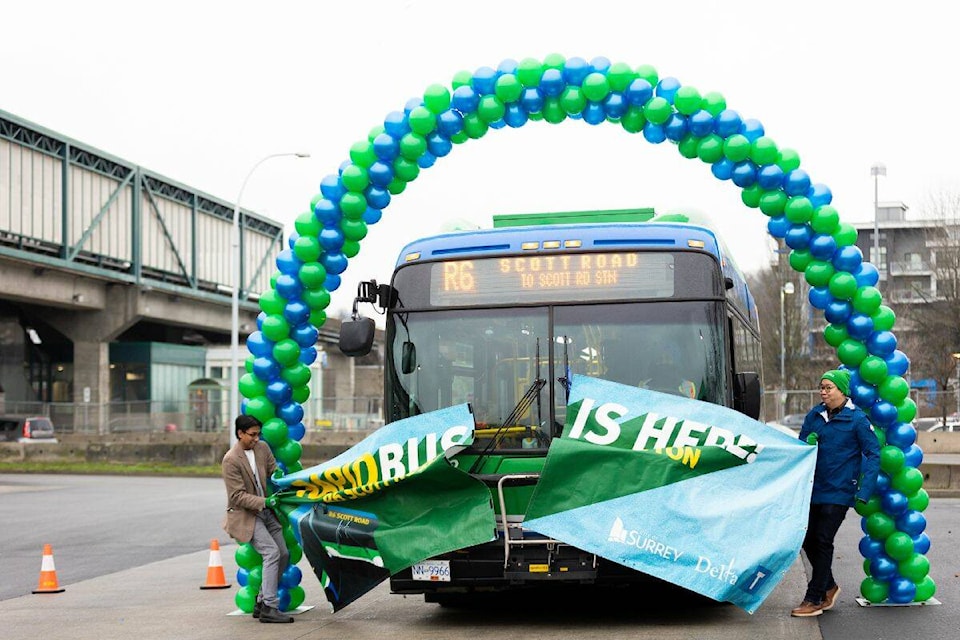By Frank Bucholtz, columnist
Political clout in Surrey is growing, although it still falls far short of the heavyweight clout long exercised by Vancouver.
However, clout is no substitute for sheer numbers. The latest example was brought to my attention by TransLink.
Transit ridership growth in what CEO Kevin Quinn calls the “southeast area” (in the past referred to as “South of the Fraser”) is outstripping that of Vancouver substantially. In 2023, growth in the southeast area rose 22 per cent, compared to just nine per cent in Vancouver.
Quinn said that the number of transit riders in Surrey is already ahead of the pre-pandemic numbers of 2019. Vancouver is catching up to 2019 ridership numbers, but isn’t quite there yet.
As a result, many more improvements have come and are coming to the Surrey-Langley-White Rock-Delta area. The R6 rapid bus route has been instituted from Newton and along the Scott Road corridor, and two Bus Rapid Transit routes are also planned — one in the King George Boulevard corridor from White Rock to Guildford, and another from Langley City to Maple Ridge.
Bus Rapid Transit is a fascinating concept. It envisions improvements which are closer to those in a rail-served corridor — with higher platforms, dedicated bus lanes and traffic signals which give buses priority, and very frequent service — from three to five-minute headways. BRT routes even have the potential to be converted to rail service in the future if the demand warrants and capital funding is available.
TransLink has increased service on a number of Surrey routes and will be making more service improvements soon. In September, increased service is planned on 60 of its routes, and improved evening service on 11 routes. Late evening Handydart service is also planned.
TransLink hopes to make more substantive changes in 2025, but its long-term funding remains a dark cloud overhanging improvements. The major sources of local revenue are fares, gas taxes and property taxes. These are not nearly enough to allow for major improvements, particularly as gas taxes are being negatively affected by electric vehicles and more fuel-efficient gas vehicles. TransLink’s success in attracting more riders also has an effect.
The Mayors’ Council (which oversees TransLink), Quinn and the TransLink board all are calling for a much larger commitment to permanent transit funding from Ottawa and Victoria. Senior governments collect far more tax revenue than any locally-run government or agency can ever hope for.
Quinn is arguing that better transit service is a long-term benefit to the Lower Mainland and B.C. economy, and plays a key role in helping newcomers and people facing income shortfalls be able to get around.
“We can’t add service fast enough to meet the challenges that are already here in the southeast region,” he said.
TransLink’s numbers and Quinn’s optimism, choosing to see challenges as opportunities, offer a hopeful look at the future. Surrey and surrounding areas are growing, and Surrey will be B.C.’s largest city soon. Realistic funding for all public services — transit, schools, hospitals, social services — means a better future for the entire community.
Frank Bucholtz writes every second week for Black Press Media publications.
